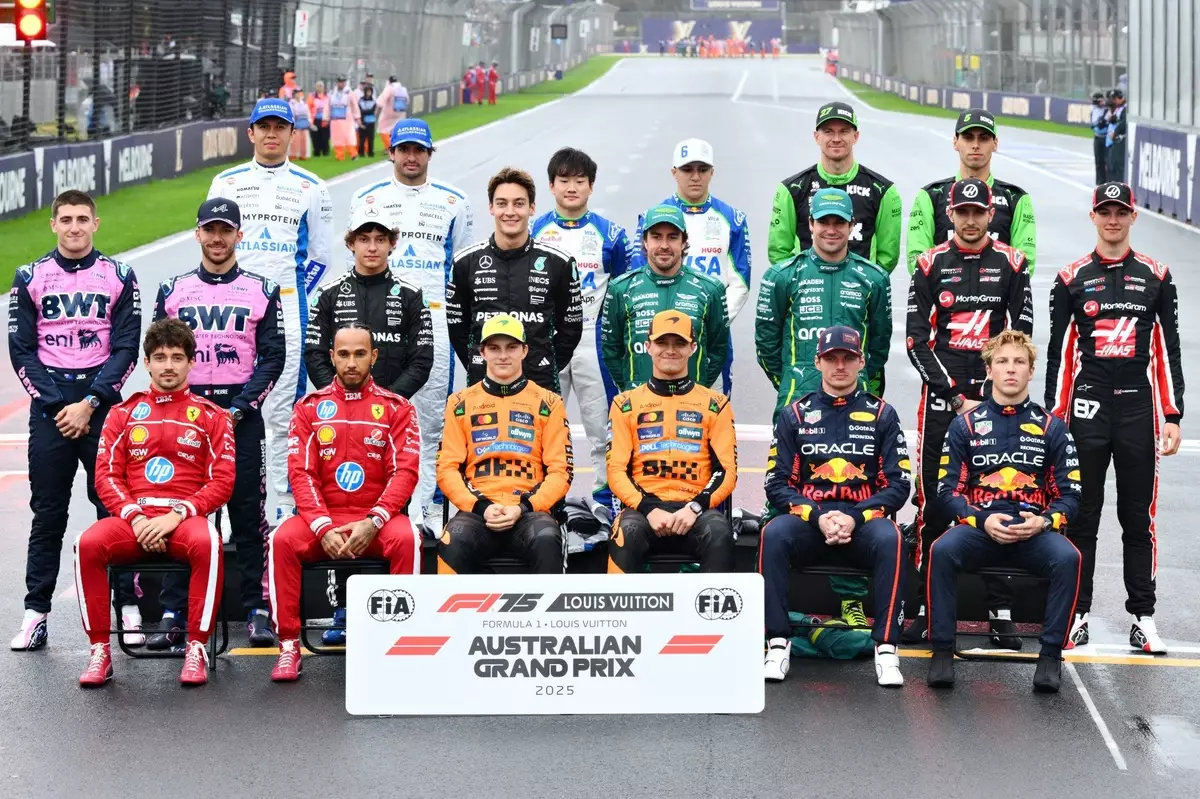The world of Formula 1 is perpetually in flux, with rider seats constantly shifting and teams recalibrating their strategies for future seasons. As the 2026 grid comes into sharper focus, it becomes evident that more than just contractual obligations or current performance will dictate the landscape. Instead, a complex web of performance clauses, team dynamics, strategic ambitions, and external influences shape the future of the sport’s most coveted driver placements. This ongoing “silly season” isn’t just about who sits where—it’s an intricate chess game with national pride, corporate interests, and career ambitions as key players.
The flagship narrative revolves around Max Verstappen, the reigning world champion, whose contract with Red Bull extends until 2028. However, that long-term commitment is not as ironclad as it appears. Verstappen’s deal contains performance-based termination clauses, which inject an element of unpredictability into his future at Red Bull. If certain benchmarks aren’t met, a departure becomes a tangible possibility. As of mid-2026, Verstappen’s outstanding performances this year might not have fully satisfied the contractual performance triggers, leaving him open to negotiations or even a shift to another top team. This volatile scenario is further complicated by recent shifts within Red Bull, such as the departure of team principal Christian Horner and the untested Ford-backed power unit program.
Moreover, the team’s future also hinges on the performance of their rivals—Ferrari, Mercedes, and McLaren—each vying to prove their competitiveness. If the new Ford engine or Red Bull’s evolving car fails to meet expectations, Verstappen’s calculus might favor a change. Notably, Toto Wolff, Mercedes’ team principal, has been vocally admiring Verstappen’s talent, and the German outfit’s strategic interest in luring him becomes even more compelling if Red Bull’s internal uncertainties persist. Such an alignment could redefine the top-tier driver hierarchy and shake up the established order.
Meanwhile, the second seat at Red Bull remains just as intriguing. Yuki Tsunoda’s contract situation makes his future uncertain, and Isack Hadjar’s impressive performances with the Racing Bulls team could propel him into contention. If Verstappen opts for a move or Red Bull decides to revamp their driver lineup, this seat could become the battleground for emerging talent and seasoned veterans alike.
How Chain Reactions Reshape Driver Destinies
The ripple effects of Verstappen’s potential move do not end with the Red Bull garage. The Mercedes camp, typified by driver contract negotiations and talent development, faces its own set of questions. George Russell’s contract renewal status is hanging in the balance—without a signed extension, his position for 2026 isn’t guaranteed. With a fierce rivalry with Verstappen evident even off the track, Russell must weigh whether to seek opportunities elsewhere if Mercedes opts for other talents or course corrections. Toto Wolff’s penchant for nurturing young drivers or snapping up proven winners suggests that Russell’s future at Mercedes might hinge on strategic decisions beyond mere loyalty.
Another layer of complexity is introduced with Mercedes’ rookie Kimi Antonelli. A promising talent, Antonelli’s recent struggles for form amidst a contract expiring this year could see him either pushed aside for more experienced drivers or groomed for future seasons. The dynamics of driver development and the renewal of talent pipelines will be decisive in shaping Mercedes’ strategy.
Aston Martin, fresh off its first foray into championship contention with Adrian Newey’s innovative engineering, emerges as a credible alternative destination for multiple drivers. The team’s ambitions and competitive package could lure drivers seeking a fresh start or a shot at greater success. Should Verstappen or Russell seek new horizons, Aston Martin might seize the moment, adding yet another layer to the influence of strategic team ambitions on driver movement.
Furthermore, the imminent entry of Cadillac as an 11th team introduces an exhilarating possibility—one where the sport’s landscape is fundamentally altered by a new manufacturer-backed team. While their financial muscle might allow them to attract a high-profile driver, the reality is that they are likely to favor promising talents or crew members with the potential to develop into stars. Sergio Perez, with his experience and recent form, is often cited as a candidate, but the team’s long-term vision appears rooted in cultivating fresh talent alongside seasoned veterans.
The Impact of External Forces and Emerging Talent
In addition to established stars, the driver market is increasingly influenced by younger drivers on the cusp of their Formula 1 breakthrough. Mick Schumacher, Zhou Guanyu, and Jak Crawford are among those carefully monitoring the unfolding saga. Their futures are intertwined with the strategic decisions of teams eager to invest in talent with potential, rather than just name recognition. The decisions made this year could determine whether they’re on the grid in 2026 or relegated to backmarkers or feeder series.
Another influential factor is the evolving landscape of manufacturer involvement, notably with the ambitious entry of Cadillac. Their entrance, backed by General Motors, signifies a shift towards greater competitiveness and diversity in team ownership. It might also influence driver preferences—drivers seeking stability, longevity, and a clear path to victory would be motivated to align with such a burgeoning program.
Finally, it becomes clear that the driver market for 2026 is more than a simple matter of contracts; it’s an echo chamber for the sport’s broader strategic, technological, and commercial aspirations. The decisions made now will not only define who will compete on the grid but also shape the very identity and dynamics of Formula 1 for years to come. Whether driven by ambition, pragmatism, or opportunity, those who maneuver effectively now will stand at the forefront of the next revolutionary chapter in Formula 1.


Leave a Reply